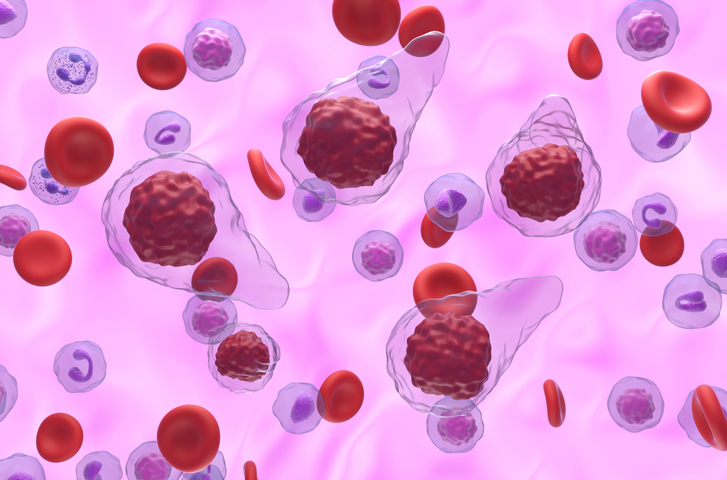
Momelotinib may provide “clinically relevant symptom benefits” in patients with myelofibrosis, regardless of Janus kinase (JAK) inhibitor exposure status, according to an analysis of the phase III SIMPLIFY studies.
Ruben Mesa, MD, of Atrium Health Wake Forest Baptist Comprehensive Cancer Center and colleagues conducted the research and published the results in Cancer Medicine.
While clinical trials in myelofibrosis “traditionally measure symptom response to treatment as a landmark endpoint of total symptom score (TSS) reduction ≥50% from baseline,” this “dichotomous assessment provides a limited view of clinically relevant symptomatic changes,” Dr. Mesa and colleagues wrote.
They evaluated longitudinal changes in TSS over the continuous 24-week period from baseline and examined individual symptom scores to “obtain a more comprehensive understanding of symptom benefits experienced” by patients with myelofibrosis who receive therapy, the study’s authors wrote.
Dr. Mesa and colleagues used a repeated-measure, mixed-effects model with individual item-level analyses to “complement the interpretation of the landmark symptom results” from the completed phase III SIMPLIFY-1 and -2 studies.
The SIMPLIFY-1 trial was a double-blind, head-to-head comparison of momelotinib and ruxolitinib. The prespecified objective of SIMPLIFY-1 was to demonstrate noninferiority for TSS response at week 24. The SIMPLIFY-2 trial was an open-label comparison of momelotinib to the best available therapy, which was ruxolitinib in 88.5%, in patients with myelofibrosis who previously received a JAK inhibitor. A prespecified objective of SIMPLIFY-2 was to demonstrate superiority for TSS at week 24.
In SIMPLIFY-1, patients receiving momelotinib and those receiving ruxolitinib reported “similar overall symptom improvements,” with a TSS difference of <1.5 points between groups for each visit after baseline in the study, according to Dr. Mesa and colleagues.
In SIMPLIFY-2, the TSS improvement in patients who received momelotinib was “consistent with that observed in SIMPLIFY-1,” Dr. Mesa and colleagues wrote. However, “progressive TSS deterioration was observed with control” in SIMPLIFY-2, according to the study’s authors, who noted that item-level scores were “heterogeneous” in both studies.
The researchers categorized similar proportions of patients receiving ruxolitinib and those receiving momelotinib as “improved” or “stable” in SIMPLIFY-1. In SIMPLIFY-2, a greater proportion of patients who received momelotinib were categorized as “improved” or “stable” compared with those who received the best available treatment.
In SIMPLIFY-1, the odds ratios for between-group comparisons ranged from 0.75 to 1.21, “demonstrating similarity in likelihood of symptom improvement,” according to Dr. Mesa and colleagues. However, in SIMPLIFY-2, the likelihood of symptom improvement for each item was higher in the patients who received momelotinib than in those who received the best available treatment.
“These findings suggest that momelotinib provides clinically relevant symptom benefits in the JAK inhibitor-naïve and JAK inhibitor-exposed settings,” Dr. Mesa and colleagues concluded.
Reference
Mesa RA, Hudgens S, Floden L, et al. Symptomatic benefit of momelotinib in patients with myelofibrosis: results from the SIMPLIFY phase III studies. Cancer Med. 2023. doi:10.1002/cam4.5799






 © 2025 Mashup Media, LLC, a Formedics Property. All Rights Reserved.
© 2025 Mashup Media, LLC, a Formedics Property. All Rights Reserved.